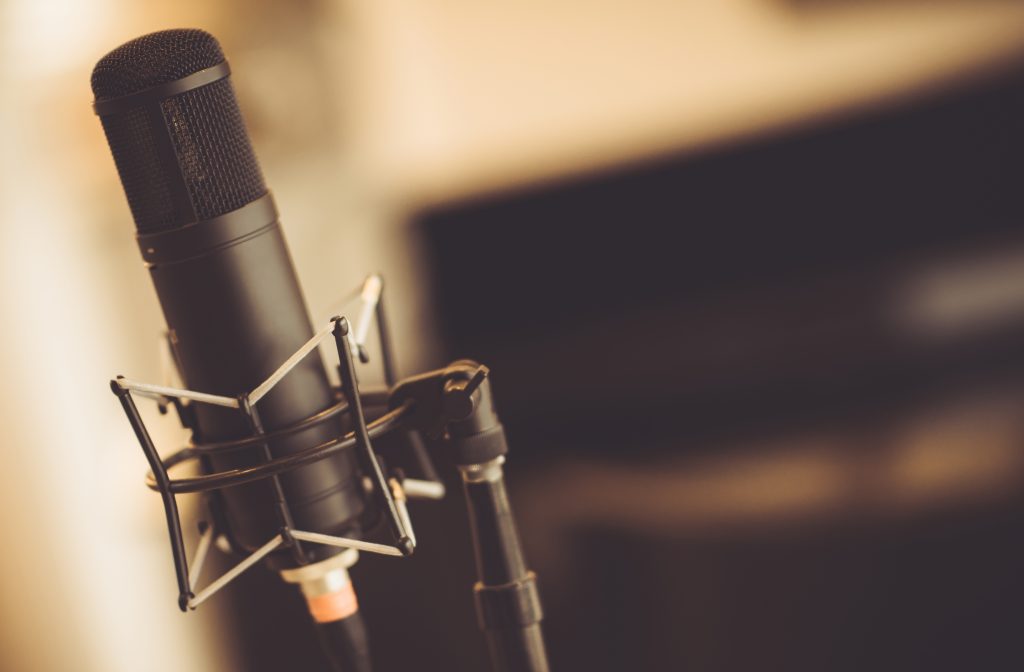What is a condenser microphone?


What a condenser mic is and how it works
To best understand what a condenser mic is, it’s important to first go over how microphones work in general. Put simply, they convert sound into electricity. Sound is waves of energy or vibrations in the air, which the microphone can capture and transform into an electrical signal. This signal can then be altered by equipment or recorded and edited as needed.
The way in which a microphone converts sound to electrical signal is actually the exact opposite of the way in which a speaker converts an electrical signal into sound. As a matter of fact, if you plug a speaker or a pair of headphones into a mic port it can work as a microphone, although not very well.
How is a condenser microphone different from other microphones?

There are several different kinds of microphones, but two of the most common types are dynamic and condenser mics. Dynamic microphones collect sound with a membrane or diaphragm which is moved by sound along with either a coil or magnet attached to it. Either way, the coil goes around the magnet and the movement of the coil and the magnet relative to each other is what generates electric currents. Thus sound is converted to an electrical signal.
Condenser mics work in a similar way in that they also use a diaphragm, but rather than moving a magnet or coil, the diaphragm is made to be conductive and moves opposite of a metal backplate, forming a capacitor. Condenser is another word for capacitor, thus the name condenser microphone. For a more in depth explanation of how they work, we’ll have to get a bit more technical.
Diaphragms, backplates,and electric fields
In order to make the diaphragm of a condenser mic conductive, some have a thin layer of metal foil attached. It’s mainly older microphones that are like this, however. Most of today’s condenser mics have a diaphragm made of what’s known as gold-sputtered mylar. Gold-sputtering is the process of applying a layer of gold atoms to the surface of a material. Mylar is an often used material for both condenser and dynamic microphone diaphragms as it’s known for being durable, flexible and lightweight.
Being covered in an extremely thin layer of gold allows the mylar diaphragm to be conductive. As for the backplate, it’s most often made of brass, a conductive alloy of copper and zinc. These opposing conductive materials form a capacitor, which can hold a charge and therefore form an electric field.
When sound moves the diaphragm, it changes the distance between it and the backplate. This changes the capacitance, or alters the electric field, in a way proportional to the sound waves. This creates an electrical signal which can then be recorded and interpreted.
Usually condenser mics require external power, both to keep the charge in the capacitor and to boost the current of the signal produced so that it can be properly received. But there are condenser microphones that can keep their charge on their own, known as electret microphones. They are able to keep a permanent charge by having a special material known as electret within them.
Advantages and disadvantages of condenser mics

You might be wondering whether one type of microphone is better than another. Dynamic microphones and condenser microphones each have their own pros and cons. Dynamic microphones tend to be relatively low cost and are good for recording a good range of sounds, especially strong and/or loud ones. Condenser microphones tend to be more expensive and are better suited at recording higher frequency and more delicate, quieter sounds.
This makes condenser mics great for soft vocals and instrumentals, while dynamic mics work better with drums, percussion and even loud vocals. Condenser mics are more sensitive to sound thanks to how lightweight their diaphragms are, allowing them to be moved by sound waves more easily. This is what makes them better able to pick up higher frequencies and softer sounds, but also why they aren’t good with loud sounds. They have certain decibel thresholds after which they will no longer work properly when crossed.
Their sensitivity also allows them to record much higher quality sound as they pick it up more accurately and in a wider range of frequencies. This is only true if the condenser microphone itself is high quality, however. A high end dynamic mic will have better sound quality than a cheap condenser mic.
Ways to power condenser microphones
As mentioned before, condenser microphones usually require external power, such as through a power supply connected to an outlet. Being dependent on external power can be a downside if you need a microphone that’s portable. If you’re mainly working in a studio, this isn’t really an issue. In fact the type that requires the most power is one that many musicians feel is the best, those using tube technology.
The oldest form of condenser microphones, they work by amplifying the signal to the needed level with vacuum tubes. Being an older and less efficient technology, they usually need to be powered by an external power supply brick. Rather large ones at that. Despite this, many feel the warm tones they provide are worth it.
If you don’t want to be reliant on a power supply, one solution is mics powered through what’s known as phantom power. Phantom power refers to the small amount of power provided by the audio interface the mic is plugged in to, 48 volts to be exact. Most audio equipment you would plug a microphone into should provide this. That 48 volts is just enough to power condenser mics that need it and small enough that it doesn’t adversely affect dynamic mics.
For a condenser mic that needs no external power at all, there are electret microphones. They work by relying on materials with a permanent electrostatic charge. This is actually where the word “electret” comes from, being considered the electrostatic equivalent of a permanent magnet.
With that you should hopefully have a good understanding of how condenser microphones work and their various forms. I hope you found it helpful either in finding the right microphone for you or simply satisfying your curiosity.


